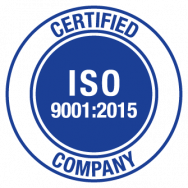Right now, there exists an explosive demand for consumer electronics in the world and this demand is increasing at an exponential rate. Since the consumer electronics industry is built on PCB manufacturing and assembly services, both industries have grown significantly over the years of operations. Over the years, the manufacturing of printed circuit boards or PCBs and their assembly services have come a long way in making them the foundation of consumer electronics. With consumer electronic products depending on properly designed, manufactured, and assembled printed circuit boards, the PCB manufacturing and assembly sector has grown and become even more effective.
At Rush PCB Inc., we make high-quality PCBs that can integrate into all types of consumer electronic devices to allow them to perform their intended functionalities. We have the necessary experienced personnel and the advanced technological equipment to deliver high-end PCB manufacturing and assembly services to the consumer electronics manufacturing sector. Thus, we are fully prepared to satisfy the up-and-coming trends in PCB manufacturing and PCB assembly services for any client in the consumer electronics industry.
PCB Technologies for Consumer Electronics
The rapidly advancing technology in electronics has resulted in diverse and complex PCBs required in modern consumer electronic products. The evolution in PCB technology has resulted in consumer electronic products being made in various types and configurations, with each product capable of meeting specific applications and needs. For the consumer electronics sector, we offer key PCB technologies including:
Single-Sided PCBs
These are the simplest form of printed circuit boards, and feature one layer of conducting material on a substrate. These boards are most useful in basic consumer electronic products with low component density.
Double-Sided PCBs
With conductive layers on both sides of a substrate, these boards allow more complex circuitry. Double-sided boards are used in consumer electronic products such as set-top boxes, audio amplifiers, and household appliances.
Multilayer PCBs
As they consist of conductive material layers with insulating layers in between, these PCBs are capable of holding very hierarchical circuits. Most suitable for sophisticated consumer electronics such as audiovisual systems, home communication systems, servers, computers, and many others.
Flexible PCBs
These boards are essentially made from flexible materials, allowing them to bend and flex reliably. As these PCBs can twist and bend, they are ideal for irregularly shaped and compact devices such as flexible displays and wearable technology.
Rigid-Flex PCBs
These boards have features of both the rigid and the flexible PCBs and so they offer both the flexibility and the rigidness. These are most used in military equipment and medical devices, as the space and reliability of these devices are critical.
High-Density Interconnect PCBs
HDI or High-Density Interconnect PCBs are superior to normal PCBs in many ways, such as offering higher device density per unit area and thus demanding the use of small and efficient parts. Most of the latest generation of wearable electronics, tablets, and smartphones rely on HDI PCBs for their compact features.
RF or Radio Frequency PCBs
The design of these PCBs is geared towards operation at high frequencies. Many electronics such as radars, satellite systems, and communication devices, among others, require these printed circuit boards.
We offer the latest PCB technologies with the ability to integrate a higher number of complex functions within smaller spaces. Apart from maintaining better signal integrity, our PCB technologies help in better management of heat dissipation. We also utilize state-of-the-art materials and manufacturing techniques that help improve the capabilities of the boards that we offer to enhance the reliability of the electronic devices being created.
PCB Application in Consumer Electronics
In most consumer-grade electronic equipment, the PCB is a critical component. It must fulfill numerous functions, for example:
Television Sets
Most TV sets today, both LED and LCD types, are flat screens relying on multiple PCBs. They handle lots of operations such as display driving, audio and video processing, I/O functions, and power supply.
Laptops and Computers
There are important subsystems in computers and laptops such as motherboards, sound cards, graphic cards, and network interfaces that apply PCB.
Mobile Phones
Modern life is unthinkable without mobile phones. Typically, every circuit within a mobile phone, starting from the main system board to antenna boards, display drivers, and charging circuits, is made on PCBs.
Cameras
Consumer photographic equipment and video cameras require PCBs for power management, display drivers, autofocus, flash operations, shutter control, storage, and image processing.
Audio Equipment
PCBs exist in power supply, input/output control, and amplification of audio in headphones, speakers, and home stereo systems for entertainment.
Gaming Consoles
Electronics like the Nintendo Switch, X-boxes, and PlayStations all have PCBs for functions such as processing, discs, and game cartridges, as well as wireless and Bluetooth.
Household Appliances
Most white goods or household appliances such as coffee machines, vacuum cleaners, blenders and mixers, microwave ovens, OTGs, refrigerators, and air conditioning units use PCBs for power supply, timers, and electronic controls.
Challenges in PCB Manufacturing for Consumer Electronic Equipment
High-end consumer electronic equipment presents unique challenges for manufacturing PCBs. These challenges are different and distinct from those in low- and mid-end markets. For example, in the automobile industry, luxury cars demand better fitment and finish, better and sturdier materials, and better manufacturing processes. Some manufacturing challenges are listed hereunder:
High-Density Interconnect Boards
Major challenges involved with HDI or high-density interconnect boards are:
- Complex Inner Layer Track Layout: As products get more sophisticated, the demand for higher density, precision layout, and intricate inner layer layout is escalating. The presence of varying impedance signal lines within the inner layers heightens the complexity of the design. Precise control of track width and spacing maintains the integrity of these lines over multiple boards along with the use of suitable substrate material.
- Layer Alignment and Multiplication: The challenge of aligning multiple layers accurately increases with the number of layers present in these boards. Adding to the manufacturing complexity and costs is the increased use of thin core boards, as they are more prone to folding and wrinkling.
Films
PCB manufacturing is based on films susceptible to shrinking and expanding under humidity and temperature changes in the workshop. The layers in a board, made from these films, reflect the behavior, complicating the accuracy of the alignment between the inner layers.
Lamination and Stackup
The lamination process begins with putting together a stack of substrates and prepreg material. The stack is then subjected to heat and pressure. Issues such as sliding, delamination, and steam drum residues are prone to this process. There is more evidence of issues like size coefficient compensation, shrinkage control, and inconsistency in expansion when many layers are involved. In addition, the presence of thin interlayer insulating layers often leads to test failures of interlayer reliability.
High Tg and Special Plates
- Drilling Complications: Using various materials in multilayer boards results in complications during drilling holes due to their variations in roughness. This further complicates the removal of glue residue. Most high-density multilayered boards with high hole density exhibit a lower production throughput due to the lower efficiency and greater risk of drill-bit breakage.
- CAF Effect: The CAF or conductive anodic filament effect is more prominent due to the proximity of holes in high-density boards. This is obviously a serious problem if we want to keep the integrity of the PCB.
Our Competence in PCB Manufacturing for Consumer Electronics
We have full-fledged design, manufacturing, and assembly capabilities to easily handle complex projects of printed circuit boards. Through our capabilities, we have created a reputation as a trusted and preferred manufacturer of consumer electronics PCB. Our capabilities in PCB manufacturing for consumer electronics include:
Multilayer Manufacturing: We manufacture various multilayer circuit boards, including RoHS types, starting from 2 to 40+ layers, and we cater to various complexities in PCB design.
Diverse Surface Finishes: HASL, immersion gold, immersion silver, and other lead-free options, such as ENIG, OSP, and Gold Fingers are our surface finish capabilities.
Inspection and Quality Control: To ensure that we come as close to achieving the highest possible quality control, we use AOI or Automated Optical Inspection, X-ray inspection, and other inspection techniques.
Controlled Manufacturing Environment: All of our production facilities maintain a static-free, air-conditioned environment that is optimized for the production of PCBs.
Flexible PCB Types: We can handle the manufacturing of a variety of PCBs. This includes rigid, flexible, rigid-flex, and multi-layered PCBs.
Material Selection: We can meet diverse PCB material requirements, including Nalco, Teflon, Rogers, FR-4, and more.
Our Competence in PCB Assembly for Consumer Electronics
We support all types of PCB assembly, whether low-cost, high-volume, or high-cost, low-volume, for the consumer electronics market. We provide a wide range of printed circuit board assemblies starting from prototypes to mass production, including repair. Our manufacturing services focus fully on the client’s requirements. Possessing extensive knowledge, expertise, and experience in this field, we assemble our PCBs to the highest quality standards, and they pass stringent inspections of quality. Our competence in PCB assembly service for consumer electronics includes:
- Surface Mount Assembly
- Lead-free Assembly
- Quick-Turn Assembly
- X-Ray laminography
- BOM creation/Component selection support
- DFT and DFM engineering support
- Electrical, PCB, and layout capabilities
- Fixture-less and with-fixture in-circuit and functional testing
- Complete mechanical assembly
- Harness and cable assembly
- Potting, sealing, and conformal coating meeting IPC-CC-830B
- Closed loop aqueous cleaning system
- No-clean flux process system
- Assembly of Surface Mount, Plated Through, and mixed technology
- RoHS and non-RoHS complex PCB assembly up to 20” x 18”
- On-site firmware programming
- Component placement to 7-mil pitch
- Placement and repair of 0201 package components, BGAs, ultra-fine pitch µBGA, QFN, QFP, FCP, and CSP placement and repair
- Auto-calibration in SMT lines
- Laser alignment with vision systems for SMT placement
Our Certifications
At Rush PCB Inc., we are aware of and understand client requirements. Therefore, our assembled PCBs typically exceed customer expectations. We have extensive quality control procedures in place supporting our board assembly and PCB manufacturing processes. We can deliver top-quality products with perfect functionality under different operating conditions in various applications. We adhere strictly to certifications and regulatory standards for providing performance-driven PCB assemblies for our consumer electronics customers. We possess the following compliance and certifications:
- J-STD-001 Compliant
- IPC-A-610 Compliant
- ANSI/J-STD-001 Compliant for Class II & III only
- ISO 9001:2015 Certification
- AS9100D Certification
Why Rush PCB Inc. for Consumer Electronics?
We offer state-of-the-art capabilities combined with our preferred network of qualified suppliers. This brings you the most optimal range of PCB solutions that you can efficiently use in various consumer products. We offer cost-effective quotes and cater to all simple to complex board requirements in the consumer electronics industry. E-mail us your specifications and your quantity requirements for any type of PCB manufacturing and assembly services for consumer electronics. Give us a call, and we will forward you a quote for your requirements.
What are your considerations for a high-quality PCB board?
Do you use serpentine traces? Why?
How do you mitigate EMI/EMC issues in your PCBs?
- We place the clock generator away from any external connector;
- We use inner-layer routing for high-speed signals.
- We implement proper return paths to minimize loop area and signal path return path lengths.
What priority do you use for ground and signal lines in multi-layer PCB designs?
Do PCBs generate heat?









